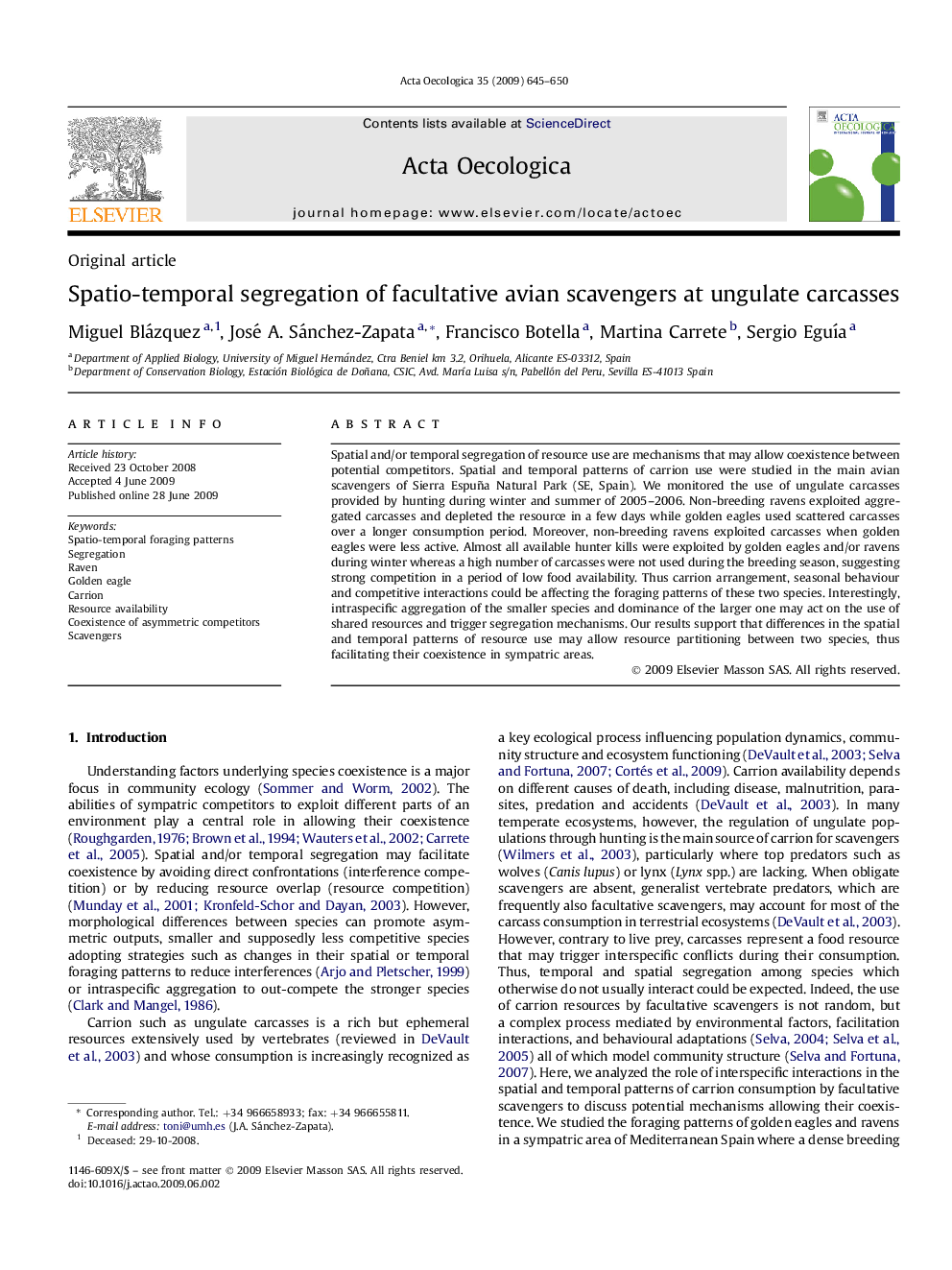| Article ID | Journal | Published Year | Pages | File Type |
|---|---|---|---|---|
| 4381429 | Acta Oecologica | 2009 | 6 Pages |
Spatial and/or temporal segregation of resource use are mechanisms that may allow coexistence between potential competitors. Spatial and temporal patterns of carrion use were studied in the main avian scavengers of Sierra Espuña Natural Park (SE, Spain). We monitored the use of ungulate carcasses provided by hunting during winter and summer of 2005–2006. Non-breeding ravens exploited aggregated carcasses and depleted the resource in a few days while golden eagles used scattered carcasses over a longer consumption period. Moreover, non-breeding ravens exploited carcasses when golden eagles were less active. Almost all available hunter kills were exploited by golden eagles and/or ravens during winter whereas a high number of carcasses were not used during the breeding season, suggesting strong competition in a period of low food availability. Thus carrion arrangement, seasonal behaviour and competitive interactions could be affecting the foraging patterns of these two species. Interestingly, intraspecific aggregation of the smaller species and dominance of the larger one may act on the use of shared resources and trigger segregation mechanisms. Our results support that differences in the spatial and temporal patterns of resource use may allow resource partitioning between two species, thus facilitating their coexistence in sympatric areas.
